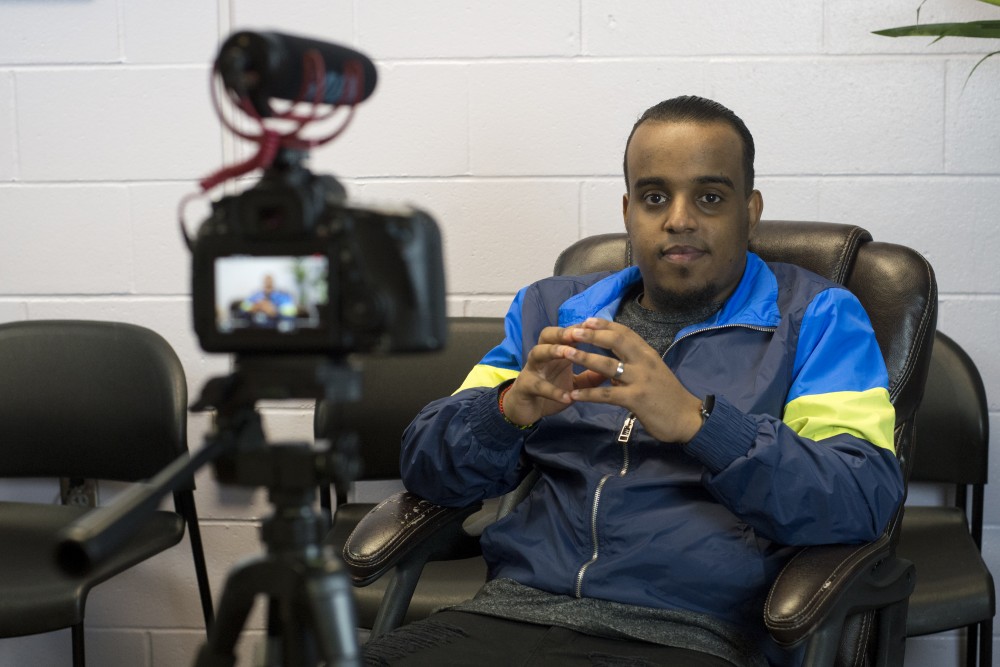A short film about Cedar-Riverside aims to bridge cultural gaps between the community’s elders and youth and highlight positive stories in the neighborhood.
Local artist Sisco Omar began filming last month with in collaboration Springboard for the Arts and the West Bank Business Association. The film will feature profiles of community members and a conversation between youth and elders. Omar hopes allowing the community to present their own stories will counter negative media coverage.
“In this day and age, we have every resource available to us where we can create our own platform and tell our own story. And if we don’t do it, then we’re just giving the pen and the paper to the people who are telling our story and saying we’re this kind of people and not who we are,” Omar said.
To combat stereotypes, Omar recently began experimenting with film, skits and other art forms.
Omar interviewed community member Burhan Israfael for the film Wednesday. Israfael said he hopes his participation in the film will improve Cedar-Riverside’s representation in the media. But he said minority communities should not have the responsibility to counter negative perceptions.
“I don’t think that communities that are underrepresented [or] underprivileged should be put in the position where we have to defend ourselves, especially when we didn’t create the conditions. We didn’t create the perception that people have,” Israfael said. “There are a lot of communities just like ours that have gotten the short end of the stick as far as the way we’re represented through the media.”

The film also aims to address cultural gaps and stereotypes between Cedar-Riverside youth and elders. Brian Coyle Center Director Amano Dube said these generational gaps exist because many elders are immigrants with different cultural backgrounds than their Minneapolis-born children and grandchildren.
“That is a huge gap. Kids are not really bound to how their grandparents or even parents want them to behave,” Dube said. “[The youth] have their own social, cultural and environmental exposures, and they want to be 21st Century kids.”
The gaps have led to everyday misunderstandings between members of each generation, Omar said.
“The elders have this thinking that’s like, ‘you know, the youth are hanging out on the street and they’re up to no good,’ but really the youth are out there because they don’t have anything else to do,” he said. “They’re not out there plotting on crime or anything. There just kids gathered and talking about basketball or anything.”
Israfael said he hopes the film will promote a dialogue that can address the differences within the community.
“Back home, where we come from we’re very communal … and so that’s what we’re trying to bring back right now, hopefully with that project. With them being able to interact and socialize and hopefully being able to bridge those differences that coming over here created,” Israfael said.
Omar said he plans to continue talking to residents after the film premieres on June 9.
“I would like for this to keep going and cover every single person that is in this community, if that’s possible,” he said.
Editor’s note: This article has been updated to reflect the entirety of the collaboration for the project.













